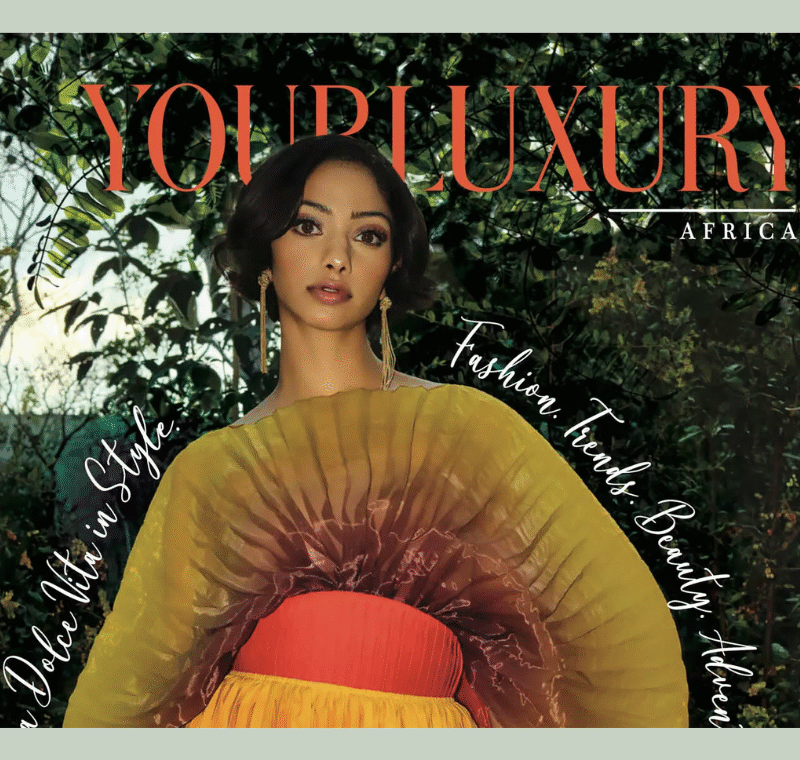Breaking the Nets: an inspiring, pioneering multimedia series on India’s fisherwomen
Multimedia series Breaking the Nets is a truly remarkable piece of work. Reported and produced by freelance journalists Shamsheer Yousaf, Monica Jha and Sriram Vittalamurthy, it turns the spotlight on the little-seen world of India’s fisherwomen and required the trio to drive 14,000km throughout the country to compile the project.
While over 12.3 million women in India work in the fishing industry, their contribution has gone largely unacknowledged. Yousaf, Jha and Vittalamurthy travelled across six states to report on the obstacles these extraordinary individuals have had to overcome, including sex slavery and debt bondage.
Blending compelling text with stunning visuals, Breaking the Nets – which can be seen on The Wire, one of India’s leading online news publications – was a worthy winner of the FIPP-sponsored Digital Journalism Award at this year’s New Media Writing Prize awards.
We caught up with Yousaf, Jha and Vittalamurthy to talk about their powerful five-part series, the evolving media landscape in India and the importance of investigative journalism in 2025.

How did Breaking the Nets come about? What inspired you to tell the story of India’s fisherwomen?
Shamsheer Yousaf: The idea for the project first emerged during the Delta wave of Covid in India. This was around April-May 2021. Infections rose exponentially, hospitals were under massive stress, and many people died. Cremation grounds were so overwhelmed that bodies were left floating in rivers. One estimate puts the excess number of deaths in 2021 at 2 million. As freelance journalists, we were feeling a little frustrated. Covid had changed business models for many publications that we regularly wrote for, and it became difficult to report on Covid as it was unfolding. Once the wave petered out, and we received our vaccinations, we began exploring a project examining how Covid shutdowns affected the livelihoods of marginalised communities – street hawkers, home based workers, garment workers, sex workers and so on. Fishing communities were one of them.
When we were reading about fishing communities, and speaking to groups working with them, we noticed that relief efforts were focused on fishermen going out to sea, while the fisherwomen were largely overlooked. And that’s when we began to ask ourselves: Why are India’s fisherwomen invisible in mainstream conversations about the blue economy? And this was something we saw in agriculture, where women’s roles as farmers were being grudgingly accepted. We have also worked on plenty of stories on fishing earlier, in which, to be honest, we did not speak to as many women as we should have. We wanted to change that.
Monica Jha: And there were other questions. How do gender and caste come together to create layers of discrimination? And what are women doing to fight back against all this exclusion? We wanted to spotlight women who were challenging patriarchal norms within their communities, or confronting issues like caste oppression and climate injustice. It’s crucial right now – coastal communities are on the frontline of climate change, but we hardly ever hear from women about the challenges they are facing and the solutions they are crafting. These women turned out to be not just fishers, but also community organisers, legal path breakers and environmental stewards. Their struggles and achievements can serve as a model for other marginalised communities.

Madrid, Spain, 21-23 October 2025
What does the next era of media look like?
Hear from Time, The New York Times, Arab News, The Economist, Axel Springer, Condé Nast, Hearst, RocaNews… and many more.
What were the biggest challenges you faced putting together the series?
Jha: The first consideration was ethical storytelling. Many of the women we met had experienced profound trauma – displacement, debt traps, caste oppression and sexual abuse. We had to constantly ask ourselves: Are we telling this story in a way that affords the women the empathy and dignity they deserve? Are we creating something of value? We worked closely with these women and the community-based organisations and translators they trusted to ensure informed consent, accuracy and reciprocity.
Sriram Vittalamurthy: On the logistical side, these stories were set across different regions of India. The settings spanned from the foothills of the Himalayas to an island near Sri Lanka, from Mumbai on the west coast to the Sundarbans on the east coast where India shares its border with Bangladesh. To work within our budgets, we realised that driving would be the most cost-effective approach. So, between Shamsheer and me, we ended up driving close to 14,000 kilometres.
Yousaf: So, one of our objectives was to provide as immersive an experience on mobile as on the desktop. We made sure every story worked well in vertical format – so we had to edit each video on the project separately for vertical viewing. That turned out to be a lot of work. For the website, finding a good developer was a real challenge. One developer dropped out as we were taking much longer than expected, another ghosted us after finishing work on a page. The page with Instagram-style stories proved to be particularly tough. Finally, we ended up with an excellent developer, who was not just quick, but also patient with my detailed notes on experimenting, tweaking and optimising the website. Language was the other barrier. The project spanned seven languages – Tamil, Marathi, Hindi, Odia, Santhali, Bengali, and Maithili. While we were proud to feature all these languages – including the indigenous Santhali language – it did require quite a lot of work in the field and in post-production to capture it accurately. We got the final drafts cross-checked by experts or native speakers, acknowledged on the project homepage.
The series blends words and visuals so well. Could you talk me through the process of matching visuals with the copy effectively and what the importance is of video when it comes to storytelling in 2025?
Vittalamurthy: From the start, we knew this had to be a visually driven, multimedia-first project. I think when people think about women in fishing in India, they largely think of women as fish vendors. But in researching this story, we realised that there are many women who go fishing. In Rameswaram, we have women who dive into the sea, with no gear, to collect seaweed. In Sundarbans, women spend many nights on tiny dinghies in the mangrove forests to catch crabs and fish. One of the most unforgettable visuals we had in the series is of women clad in saris, diving into fishponds as they harvest farmed fish. These visuals were quite captivating. So, we had a fair idea that they would drive interest in the story.
Yousaf: One of the things that we wanted to experiment on this project was with formats. The web offers a canvas unlike any other for storytelling. The big platforms – YouTube or Instagram – constrain you to tell stories in a particular format. So, we went to the field with a format in mind for each story. In the Mumbai story, we wanted to do a black and white photo-essay with a voice-over. For the story on forest rights, we knew we wanted to do two mini-documentaries. But many of these ideas morphed after we finished our field reporting. In Odisha, where we came across women who were quite uncomfortable with talking to a camera, we devised a format that involved audio, photographsand subtitles. In Karaikal, a story inspired by oral histories of journalist Svetlana Alexeivich, we decided on interspersing these accounts with some of the more emotionally powerful moments as first-person videos. Our first story in the series, a mini-documentary, was conceived in an Instagram-stories format only after we began post-production.




The stunning imagery from the Breaking the Nets project.
What are some of the most memorable moments for each of you while on the road working on the project?
Vittalamurthy: I was apprehensive about the long drives, but that was the only way to manage the project on our tight budget. It turned out to be a culinary adventure! One of the joys of reporting across India is getting to taste how distinct the food is from place to place -and we definitely didn’t hold back. There was a little village in Andhra Pradesh where a local shopkeeper insisted we try a nearby restaurant. We would’ve completely missed it otherwise – if not for the tons of chillies being dried outside – but the fish meal we had there was unforgettable. Perfectly spiced, simple and full of flavour. Litti-chokha, a traditional meal of stuffed wheat balls served with mashed vegetables, at an eatery which was just a thatch roof propped up by some bamboo poles, was divine. Smoky, earthy, and spicy, with a generous pouring of ghee.
At Karaikal, a women’s self-help group served some fantastic fish. So did our host at Sundarbans. The fish in this estuarine region is unique – delicate, sweet, and very bony (the locals actually warned us: “Be careful, these bones are so hard they could kill you.”). We were picking through every bite with surgical precision, but the taste was worth it. Naturally, we ate a lot of fish on this trip.
Yousaf: I actually loved the driving part of this journey. And some roads were smooth and fast – absolute joy to be on. Others… honestly, I don’t think they qualify as roads at all. One stretch gave Monica a backache that stayed for a while! We got to drive through places that we learnt about back in school, but never had any reason to visit. On some of our breaks from our long drives, we visited some lesser-known but stunning temples and mausoleums. On one break, we spent a few hours wading through Chilika Lake, the world’s second-largest coastal lagoon, watching migratory birds. And the highlight of the trip was visiting the Bodhi temple and sitting beneath the descendant of the Bodhi tree under which Buddha attained enlightenment.
Jha: The most fun leg of our travels was definitely in the Sundarbans. We had to leave the car on the mainland and take a boat to reach this remote island. Once we got there, our local driver Atin Das had a surprise waiting for us – a jugaad vehicle he had built himself. It was basically a motorcycle frame welded together from metal bars, with a small engine somehow pulling it all together. That contraption was then attached to a cart – just a wooden plank balanced on cycle wheels. That was our ride. It used to take us a long time to reach anywhere – we used to start at 3:30 am to get to the shoot to catch the golden hour at sunrise – but we loved it. We used to joke that we were being carried around like tomatoes – shuffling and tumbling along village paths, holding on for dear life, but also laughing the whole time. It was bumpy, totally ridiculous, and completely unforgettable. Atin became a friend, and we still keep in touch.

How has the media landscape in India changed over the last few years and what are the main challenges for the local industry at the moment?
Yousaf: The media landscape has become not only more polarised but also troublingly aligned with the ruling party. Independent newsrooms face legal attacks, advertiser pressure, and shrinking funding. Many journalists – especially freelancers – work without safety nets. There’s also a lot of churn. Covid was a low point when many publications had to cease operating. Of those that survived, many had to close down bureaus and editions, or layoff staff. Ground reporting budgets in most publications have dwindled, and so we are seeing less and less of stories outside the big metros in the mainstream media.
On the other hand, more new publications are launching every year, experimenting with video, podcasts, and data visualisations. Some are thematically focused, such as on migration or on India’s craft heritage. This is an encouraging development. A country as complex as India needs more journalists willing to experiment with new formats and dig deep into specific themes.
How important is investigative journalism in 2025 in a time when misinformation is so rife?
Jha: It’s absolutely essential. We’re living in a time when misinformation doesn’t just spread – it’s manufactured, weaponised, and often more viral than the truth. It isn’t just coming from shady websites; it’s seeping in through social media algorithms, official narratives, even AI-generated content. In this landscape, investigative journalism isn’t just about uncovering scandals – it’s about anchoring people to reality. Today, investigation has to trace how big systems play out in everyday lives – like how a boom in shrimp export shows up in the earnings of a woman who makes dryfish; how witch hunting is actually a tactic to usurp indigenous women’s land; or how it’s the dominant castes that actually benefits from illegal sand mining in Bihar and the oppressed caste are the biggest victims. It’s not just about scoops. It’s about storytelling that’s rigorous, that isn’t afraid to question power, and that stays empathetic to those who are marginalised.
What are some of the future projects you are working on?
Yousaf: We’re developing a couple of immersive digital projects in parallel. One is about access to justice and another deals with climate change impacts. All these projects will stay true to our collaborative, visual-first, and solutions-oriented ethos. And both are being co-created with the communities at their centre. We also plan to start on a documentary film later this year.








